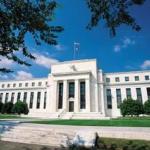 There have been many appeals to ignorance over the last several years with respect to the effectiveness of monetary policy. One popular tactic of policy goons is to point to an improved economic statistic – like unemployment – and self-adulate for maneuvering it down. The fading print media rarely questions these spurious claims.
There have been many appeals to ignorance over the last several years with respect to the effectiveness of monetary policy. One popular tactic of policy goons is to point to an improved economic statistic – like unemployment – and self-adulate for maneuvering it down. The fading print media rarely questions these spurious claims.
But just because one action was taken doesn’t mean it was the cause of a later result. For correlation does not imply causation. Or, as the post hoc fallacy claims, “after this, therefore because of this”…post hoc ergo propter hoc.
“Gross domestic product has increased,” a policy conspirator may hold up as evidence of their handiwork, “therefore, quantitative easing must have worked.” Maybe so. Or maybe not. Without a control group, and all other things being equal, how can you really know if quantitative easing caused GDP to increase? You can’t.
One of the great vanities of our time is that government officials and academic bureaucrats control the economy. That, somehow, upon assuming their positions, they take on god like qualities, which allow them to manifest outcomes by decree. This is far from the truth.
Create new jobs. Reduce unemployment. Increase GDP. These are all things the President – or the central bank chair – like to claim responsibility for. Of course, these are all things they have little real control over.
Wandering Off Script
Certainly, they can enact policies that juice the money supply and temporarily inflate the economic numbers. But, overtime, market forces win out. The real consequences are humbling.
So, too, there are rare instances where a member of the brain trust wanders off script. These momentary lapses offer a candid insight into the fact that deep down they know they really don’t know what they are doing. Here at the Economic Prism we relish these small blips of honesty.
Last month, for example, Stephen D. Williamson, Vice President of the St. Louis Fed published a white paper titled, Current Federal Reserve Policy Under the Lens of Economic History. Inside, he describes the shortcomings of various policies.
“Specifically, he [Williamson] believes the zero interest rates in place since 2008 that were designed to spark good inflation actually have resulted in just the opposite,” reported CNBC. “And he believes the ‘forward guidance’ the Fed has used to communicate its intentions has instead been a muddle of broken vows that has served only to confuse investors. Finally, he asserts that quantitative easing, or the monthly debt purchases that swelled the central bank’s balance sheet past the $4.5 trillion mark, have at best a tenuous link to actual economic improvements.”
So if ZIRP, jawboning, and money printing haven’t improved the economy, then what good is the Fed to begin with?
The Fed’s Edifice Crumbles Away
“The primary place where QE seems to have worked is in the stock market, where the S&P 500 has soared by 215 percent since the recession lows in March 2009. Elsewhere, though, deflation fears have permeated and interest rates have remained low.”
Thus, as far as we can tell, the only success the Fed has had…has been in pumping the stock market up to nose bleed levels. At the moment, it appears this artificial edifice is starting to crumble. In fact, the DOW is down 1,360 points – over 9 percent – since mid-May.
The stock market’s decline appears to also be gaining momentum. For instance, just yesterday, the DOW rolled over in the gutter…dropping 358 points. Meanwhile, there are strong signs the real economy’s rolling over too…
Dr. Copper – the metal with a PhD in economics – is always the first to know which way the economy will go. Copper’s broad use in industry and many different sectors of the economy, ranging from infrastructure to housing and consumer electronics, makes it a good early indicator of economic activity.
When copper prices rise, economic activity soon increases. When copper prices fall the economy often then stagnates. Hence, what is Dr. Copper currently telling us?
“Copper futures finished at a more than six-year low Tuesday,” reported MarketWatch, “as concerns over demand from China pushed much of the metals sector, including gold, lower.”
According to Dr. Copper, we’re in for a rough fall. Oil could soon slip below $40 a barrel. Cross your fingers the Fed won’t do something incredibly foolish.
Sincerely,
MN Gordon
for Economic Prism
Return from The Fed’s Edifice Crumbles Away to Economic Prism




